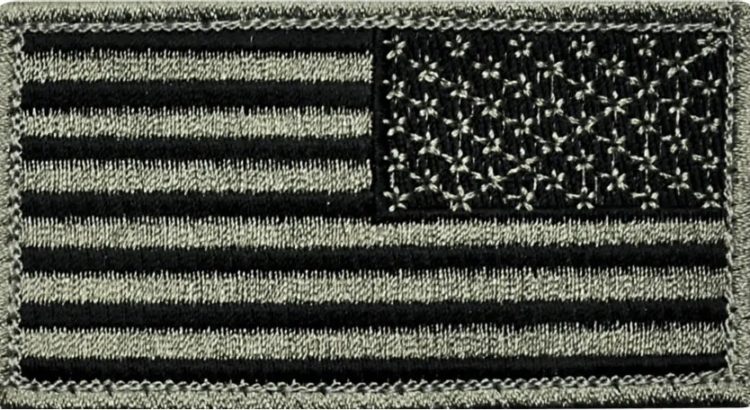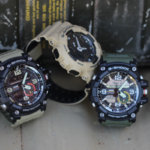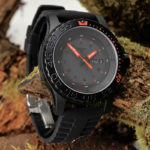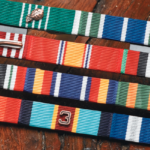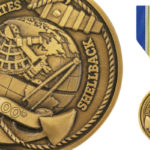Why Is the Flag Backwards on Uniforms?
The United States military is full of time-honored traditions, codes, and customs that its members uphold. The etiquette around saluting, handling the flag, wearing the uniform, and addressing the higher-ranking officers in a chain of command is detailed and specific. Every service member must know those details to the letter.
But while civilians are often familiar with many of these traditions, one tends to raise many questions among the uninitiated: the reverse American flag that is sometimes worn on military uniforms.
Considering the stringent rules in the military surrounding the handling of and respect for the American flag, it’s easy to find this custom confusing. Because an inverted flag signals a nation is under extreme distress, you might think the reverse-side flag implies something negative. However, that is not the case. The opposite is true.
So why is the flag backwards on uniforms?
Backwards Flag Meaning
The reason U.S. military members wear a reverse side flag on their uniforms is symbolic. It has to do with the placement of the flag’s canton, which is the blue field that contains the 50 stars representing the 50 states. Customs dictates that the canton must be placed at the front to show respect to and honor those 50 states.
There’s another aspect to the backwards flag meaning, too. When the flag is not reversed, and the canton is on the left side, a military member will appear as if they are retreating when moving forward, as an actual flag would be trailing behind them in this situation.
So a flag on the right sleeve of a uniform will have the canton on the right side, facing forward — the same direction the military member is facing.
If this idea is confusing, imagine carrying a flag on a pole as you move forward at a good pace. The flag will be facing the opposite direction from the one you’re moving in as the wind catches it, making it into a reverse side flag. That’s what the reversed military flag patch is intended to represent.
In fact, a flag decorating any moving object is supposed to be reversed for this reason.
When Did the Reverse American Flag Tradition Start?
The reversed military flag patch is a tradition born during the Civil War.
Battalions would go into battle with their own personal flag bearers flying a flag as a symbol of honor and respect for the country for which they were fighting. As they marched forward, the flag would fly backward, creating an image that would come to represent bravery and dedication to one’s country.
The first service members to wear a reverse side flag were paratroopers who were dropping in behind enemy lines. The flags were intended to help them identify one another more easily in a space enemies mostly occupied.
Well over 130 years after the Civil War, the reversed military flag patch became a staple of U.S. military uniforms (in 2003). Today, it’s referred to as “assaulting forward,” a phrase intended to describe the soldier’s onward march into the fray of the battle.
The custom is described in Army Regulation 670-1, which states that “the correct and only way to wear the U.S. flag patch on a uniform is with the stars facing forward.”
Is the Flag Backwards on All Military Uniforms?
In 2005, it was made compulsory to include the U.S. flag on all military uniforms. The assaulting forward flag became a part of every uniform, from battle dress to field uniforms to hot, temperate, and cold weather uniforms. However, the flag is not always reversed on all uniforms.
Should the flag patch be displayed with the flag of a specific military branch, which is a fairly common practice, then that flag should not be reversed. Reverse flags are only on the right shoulder and are not displayed with other flags.
What Color Is the Reverse Side Flag on Uniforms?
While the red, white, and blue colors are a crucial aspect of the American flag, you may have noticed that not all U.S. flag military patches display them. These are known as “subdued” flags and are used for good reason.
Various versions of the subdued flags can replace the red, white, and blue colors with combinations of black, light gray, dark gray, and brown. These flag versions are designed to reduce visibility to protect the soldier wearing them.
A bright red, white, and blue flag would stick out significantly in many environments, posing a potential risk to a soldier’s life.
Can Civilians Wear a Reverse American Flag Patch or Otherwise?
While American citizens may not be subject to the protocol and regulations that military members must follow, there is still etiquette they should adhere to if they want to respect the flag. It is okay for a civilian to wear a reverse American flag as long as they follow that etiquette and respectfully display their flag.
The same rules for military members wearing the American flag apply to civilians. Still, people should also remember that including the flag on things like sports uniforms or something that is in use only temporarily is considered inappropriate. In some instances, it may even be against the law.
Reverse Flag Patches from Medals of America
Medals of America has a variety of reverse flag patches among our many other flag patch options. Take a look at our online store today.
If you’d like to learn more about the United States military, its history, and its traditions, sign up for emails from MOA today.
